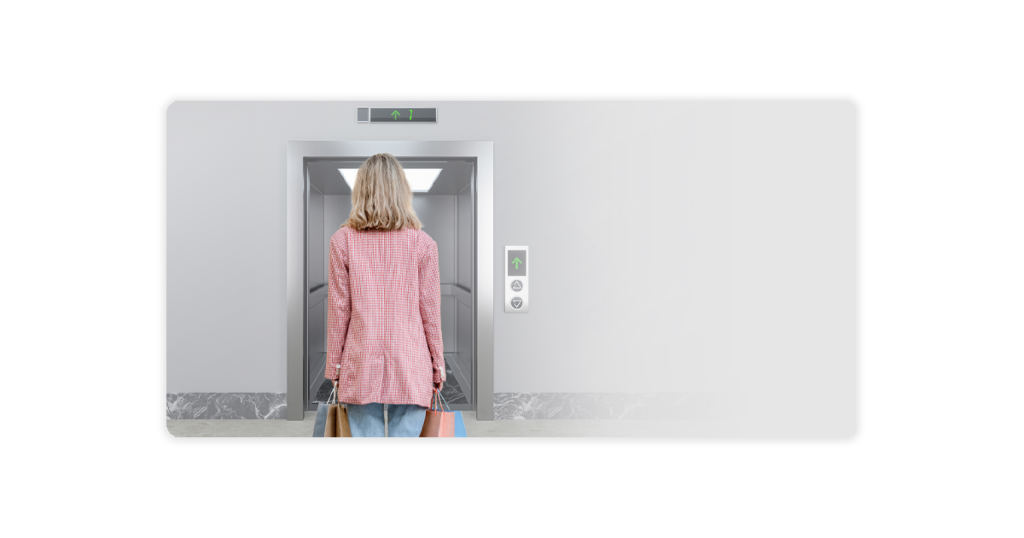Modern Buildings Require Smart Security Solutions
Access control systems are crucial in enhancing the security of multifamily and office buildings. One essential component of these systems is the elevator access control controller. Elevator access control systems are no longer optional; they’re a game-changer for multifamily residences and office spaces. This system goes beyond just restricting elevator usage; it empowers intelligent access management for enhanced security and resident/tenant convenience.
What is Elevator Access Control?
With access control elevator control technology it is possible for an elevator to recognize you or your credentials and grant access to your designated floor. Elevator access control goes beyond traditional keycards, utilizing credentials like key fobs, biometrics, or even smartphones. This not only enhances security but also streamlines user experience.
An elevator access control system consists of both hardware and software that operates the elevators and authorizes access to specific floors. Similar to building entrance doors, elevators are high-traffic areas that often require controlled access to enhance security and efficiency.

How Elevator Access Control Works
The functionality of elevator access control systems can vary depending on the specific type of system installed. However, they generally work by authenticating a user’s credentials before the elevator can travel to a particular floor.
Intuitive Control Panels
The control panel is the system’s brain, storing tenant information and access permissions. This can either be a physical device stored onsite or cloud-based software accessible via the internet. Cloud-based options offer remote management flexibility.
Smart Readers
Gone are the days of generic elevator keys. Modern systems utilize RFID readers, biometric scanners, or keypads for secure and convenient user authentication.The access control elevator interface determines whether a tenant has the appropriate credentials to use the elevator and access certain floors.
Functional Cab Buttons
Even in smart elevators, there are essential button functions in the cab, such as door open, door close, emergency call, and emergency stop buttons optimal user experience.
Unveiling the Benefits: More Than Just Security
Enhanced Security
Restricts unauthorized users from accessing particular floors, safeguarding your property and ensuring peace of mind.
Convenience at Your Fingertips
Users can easily reach their designated floors with a simple tap or swipe by swiping a card or using other credentials, without compromising security.
Extending Elevator Lifespan
Reduces the frequency of elevator use, leading to fewer repairs and a longer lifespan for your equipment.
One Card Does It All
Unify access control across your building. A single credential can be used for multiple access points, such as the building entrance, elevator, room, and other public areas, providing a seamless and intelligent user experience.
Efficient Management
Manage access for different floors and areas efficiently. Create designated zones for residents, staff, and visitors.

The Future is IP-Based
IP-based elevator access controllers are modern systems that use internet protocol (IP) networks for communication and management. These systems offer several advantages:
Network Integration
Seamless integration with existing building networks, allowing for easy communication between different parts of the access control system.
Remote Command
Manage the system from anywhere with an internet connection. Update permissions or address issues in real-time. Perfect for administrators, making it convenient to update permissions or respond to incidents in real-time.
Scalability Made Simple
Easily adapt the system to your growing needs. IP-based systems are easily scalable, allowing for the addition of new access points or floors without significant infrastructure changes. They can also integrate with other IP-based systems, such as IP cameras and building management systems.
Integration with Intercoms and Access Control Terminals
Elevator access control systems can be integrated with intercom systems and other access control terminals to enhance building security:
Intercom Synergy
Visitors can be granted elevator access via intercom systems, improving visitor management and security.
Unified Access Control
Combining elevator access with other access control points, such as main entrances and parking garages, creates a unified and efficient building access control system.
Real-World Applications
Multifamily Buildings
In residential settings, elevator access control systems ensure that only residents and authorized guests can access residential floors, enhancing security and convenience while fostering a secure living environment.
Office Building Control
In commercial settings, these systems manage employee and visitor access to different floors, restricting unauthorized entry to sensitive areas and safeguarding confidential information while improving overall building security.
The Elevated Takeaway
Elevator access control systems are an investment in the security and efficiency of your building. By regulating who can use the elevators and which floors they can access, these systems provide numerous benefits, from improved security to convenient access management. IP-based elevator access controllers further enhance these benefits by allowing for seamless integration and remote management.

